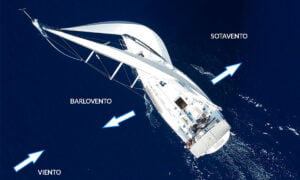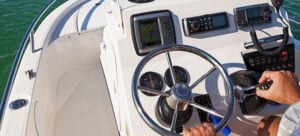If on any occasion while sailing you have felt that the wind was playing against you, you have surely considered how to act to change the situation. In this sense, there are two maritime concepts that will help you manage it in future cases: We talk about windward and leeward, terms that refer to the direction of the wind and that are worth knowing.
What is windward?
The concept of windward refers to the direction from which the wind reaches a point, in this case to a boat. It is used for all types of ships, but it is especially useful when it comes to sailing ships, since these depend almost entirely on the strength and direction of the wind. Thus, it is essential information at sea.
In fact, when we know and know how to interpret it, windward allows us a simpler and more efficient handling of the boats, since navigation is oriented in this direction so that the wind becomes an aid. In the case of sailing boats, it is advisable to direct the mainsail to direct the ship in this direction.
What is lee?
Sotavento can be described as the antonym of windward. That is, we refer to the direction the wind is going, the opposite direction from which it blows. Situations in which a ship is located to leeward can pose a risk to vessels and crews, since when the time comes, handling could be complicated.
Once again we are talking about a concept that, although it has an impact when sailing on any type of boat, is much more relevant when we refer to sailing boats. In fact, In situations where the force of the wind is considerable, a sailboat can be dragged and suffer impacts or become stranded if this direction is not avoided by maneuvers.

Why are windward and leeward taken into account?
In the maritime field, where the concepts of windward and leeward are most important, their application is applied directly to the maneuverability of vessels. To be able to navigate taking into account the direction of the wind, it is essential to have an instrument such as an anemometer or a compass..
Once you know where the wind is coming from and where it is going, there are two key issues that you must take into account when maneuvering: first, take advantage of the force of the wind when sailing upwind. In second place, When two boats pass each other, the one on the leeward side has preference due to its maneuvering difficulties., which in many cases implies that the ship sailing to windward must modify its trajectory.
The use of lee and windward outside navigation
Beyond navigation maneuvers, Leeward and windward appear in areas such as aerodynamics -mainly in the design of wind turbine blades- and on the hunt, where the aim is for the wind to come from the face - windward - to prevent it from giving away the hunter - animal or human - dragging its scent towards the prey.
The most relevant differences between leeward and windward
Apart from knowing these terms individually, when applying them in navigation it is essential knowing how to relate them and understand the differences between them, especially in the three aspects where they have the most influence: navigation conditions, wind strength and direction. In this way, understanding the circumstances that occur in each case makes it much easier to manage a boat.
Navigation conditions
The first difference between leeward and windward lies in the ease of navigation, as it could not be otherwise. And it is that When we go against the wind the maneuvers are more complex and risky, while when driving a boat upwind it is much easier because the wind practically pushes you and helps you in each movement, making them more fluid.
Direction of the wind
Regarding the direction of the wind, we have already explained the differences between windward and leeward: in the first case we refer to the direction from which it comes and in the second to the direction towards which it is heading. That is why when we are in a windward position the expression “going with the wind in our face” is frequently used., which is also related in other areas to having a favorable situation or simple conditions to achieve something.
Wind power
Another aspect that differentiates the concepts of leeward and windward is the force exerted by the wind depending on the position. While In windward the power is greater and more constant, in leeward we speak of a lower force and generally in gusts, which also make navigation maneuvers difficult.
Why are windward and leeward so important in sailing?
The importance that windward and leeward have in navigation is perfectly explained in practice, where these concepts are perceived with the naked eye once you know them. Taking advantage of the strength and direction of the wind to operate a boat is essential in the maritime field -especially in sailing boats-, as well as knowing how to recognize the risk and try to avoid it in leeward circumstances.





